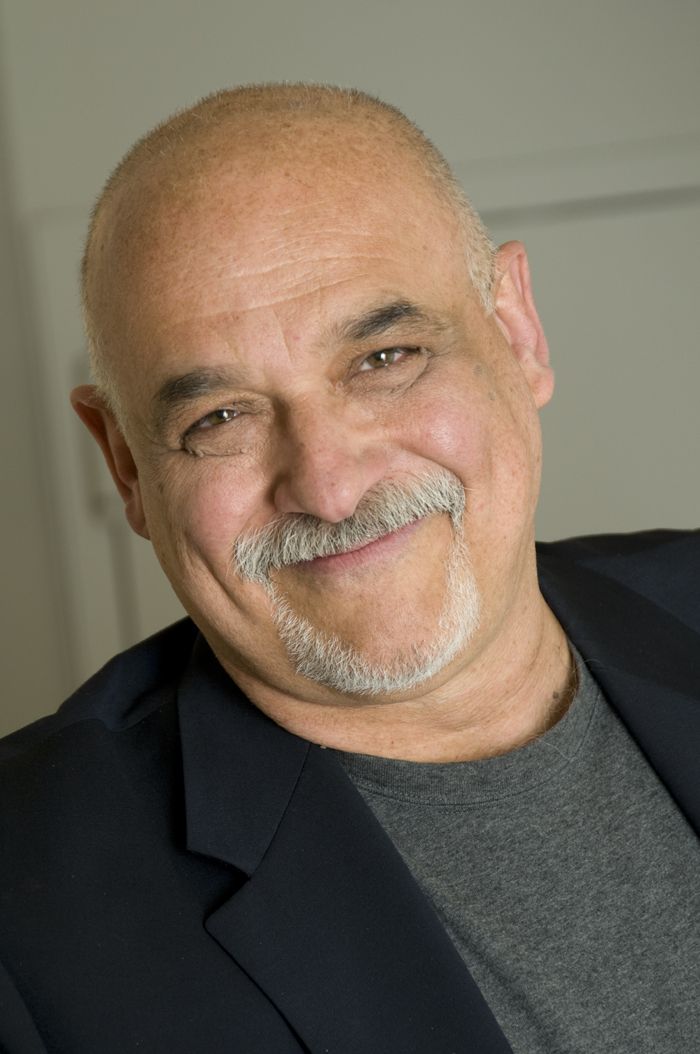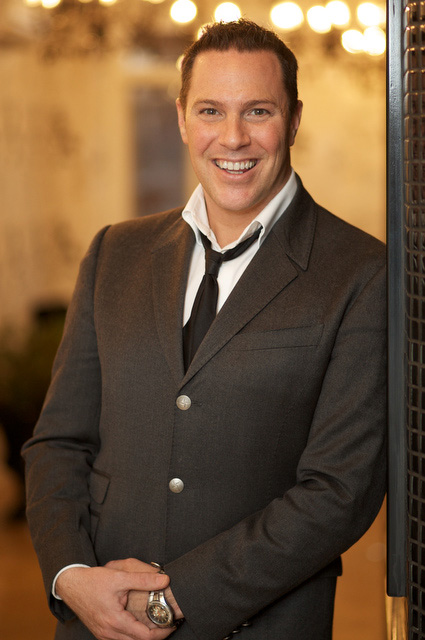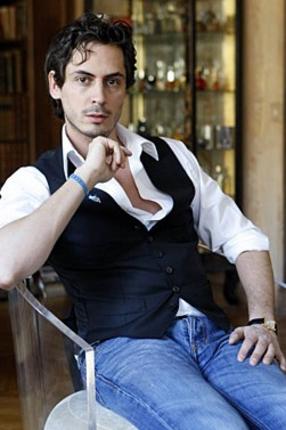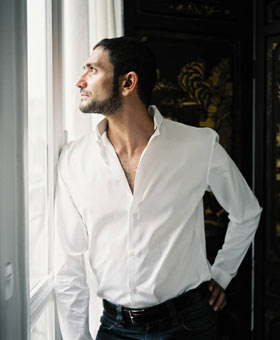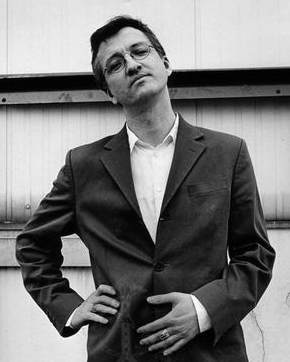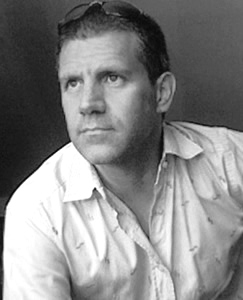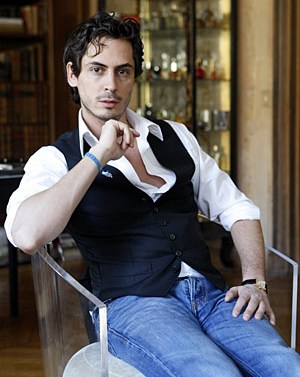The State of the Men’s Fragrance Industry
November 1, 2011
Disclaimer: The views and opinions expressed herein are solely those of the author and/or guest contributors and do not necessarily state or reflect those of
The Perfume Magazine LLC, Raphaella Brescia Barkley or Mark David Boberick.
All content included on this site, such as text, graphics, logos, icons, videos and images is the property of The Perfume Magazine, LLC. or its content suppliers and protected by United States and international copyright laws. The compilation of all content on this site is the exclusive property of The Perfume Magazine, LLC. and protected by U.S. and international copyright laws.
The Perfume Magazine Banner was designed exclusively by GIRVIN and is the property of The Perfume Magazine, LLC. and are protected by U.S.and international copyright laws. Additional Banner information can be found on our ABOUT page.
All images appearing in the banner are registered trademarks of their respected company and are used with permission.
© Copyright. 2011. All Rights Reserved. The Perfume Magazine LLC
Co-Founder, creator and artist of A Dozen Roses, Sandy Cataldo, signing bottles
By Mark David Boberick
I asked 6 top Fragrance Industry professionals to weigh-in on The State of the Men’s Fragrance
Industry. The diversity of this panel covers nearly every corner of Perfumery.
Let me introduce the men…
Francis Kurkdjian – France – Perfumer (Jean Paul Gaultier Le Male, Narciso Rodriguez For Her/For Him, Maison Francis Kurkdjian)
Kilian Hennessy – France – Creator, By Kilian, Niche Fragrance line
Neil Morris – USA – Niche Perfumer, Neil Morris Fragrances
Ralf Schwieger – USA – Perfumer (Frederic Malle Lipstick Rose, Atelier Cologne Orange Sanguine)
Claude André Hébert – Canada – Niche Perfumer, Parfums Hébert
Raymond Matts – USA – Fragrance Designer (Clinique Happy Men, Elizabeth Taylor White Diamonds)
Francis Kurkdjian
Ralf Schwieger
TPM: Are you currently pleased with the state of the Men’s fragrance market? Is there something that you wish would change?
Ralf Schwieger: No, the men’s fragrance market is deadly boring indeed… the same as in fashion: when women dress up it’s still a sight, when men do, you still get the usual black and white, suit and tie… and but now everything is casual: fragrance wise that would be some kind of fresh woody fougère, that’s all there is anyway. I deplore the disappearance of the men’s chypre family, totally out of fashion nowadays, the same pertains to the classic Orientals. Even a bit of a leathery note won’t make it through evaluation.
Francis Kurkdjian: I think there is a variety of fragrances and styles for all types of consumers, from mass fragrances to prestige and niche brands. However part of the reason why I have opened my own fragrance house is to express my own sensibility and creative vision, especially for men's fragrances.
Not really. Some brands take risks, some other are more conservative about their creative choice. It’s a question of strategy and legitimacy.
Kilian Hennessy: The state of the men's market is a concept I don't even entertain. I only try to create beautiful creative scents, expressing a timeless emotional story. Having said that, I also know that half of my customers are men, when the norm should be only one-third. So, in that sense, for me, the men's market is doing great.
Claude André Hébert: I personally think that men should trust themselves for choosing their own perfumes. A scent or cologne is very personal and I think it should be chosen by the person who’s wearing it, not the girlfriend or anyone buying the perfume only because there’s nice publicity. A man is a man and should wear something that suits his masculinity. There’s too much perfume on the market that represents the (pink) men…fresh, not too spicy, and so on. It’s time to come back to the real MEN.
Neil Morris: As a perfumer, I believe that fragrances should be "shared" and not designated by gender. That being said, I am not pleased with the state of the mass merchandised men's fragrance market. I think most of the scents are very similar and safe and do not challenge the wearer - or the industry for that matter. When fragrances are created by committee or focus groups the Art of Perfumery is sacrificed.
Raymond Matts: So what is the state of the Men’s fragrance market?
I would say stagnant! In a time warp with the wheel constantly spinning spewing out more of the same. My father would be happy, as they are still creating for his generation. He is in his late 70’s!
I’m a big believer in change… I love change and embrace it when I can. I’m not so sure the men’s fragrance market needs to be changed as much as it needs to evolve. I think we’ve come a long way over the past thirty odd years when the men’s offerings were coming from fewer than twenty brands in the prestige market. However, when I look at the casualization and the change that has taken place in menswear, we are behind. In a time when fragrance houses have more ingredients to create from then ever, we are still stuck in a perpetual rut of sameness. Many men’s fragrances are void of signature and this partly being the reason that Acqua Di Gio has maintained its number one status in the market.
Where’s my men’s signature fragrance? We definitely can say there is no shortage of men’s fragrances to choose from these days. Surprisingly, in the US the number one fragrance overall is for men, Acqua Di Gio. This fragrance has been out grossing the second place fragrance by roughly 40% in sales for many years.
Acqua Di Gio is a testament to the love of freshness in the US men’s fragrance market. A fragrance, which has endured time, defied the norm - providing the brand with repeat purchases and a signature recognizable anywhere. More importantly, a fragrance with a quality structure using quality ingredients and proving that spending money on a formula does indeed bring a classic that can defy time.
I would like to see a wider array of choices utilizing different structures that create a multitude of different signatures. I would like to see modernity with lightness and the absence of fragrances that announce me in a room before I arrive and linger hours after I leave. I desire a men’s fragrance that matches the modernity of offerings found in men’s fashion. I want a real choice!
TPM:What Men’s fragrances that have been released in the past 10 years have stood out to you as being important? Why are they important? Have any of these important fragrances been discontinued?
Ralf Schwieger: That’s difficult. Terre d’Hermès comes to mind, a success in France; I don’t wear it but I like the construction… a lot of geranium, as in the old fougères against a nice vetiver note. The orris note in Dior Homme is interesting. Both are still around.
Francis Kurkdjian: I guess the industry and the consumers recognized the level of creativity and uniqueness of fragrances. Each fragrance that has an appeal to the consumers must have something that pleases him. We have to be very humble about that and not judge too quickly. Le Male in its time changed the market. Fleur du Male by Jean Paul Gaultier and Narciso for men were awarded also in their time.
Kilian Hennessy: To be totally honest, the one reason I started my business on my own was because I was losing faith in what I was doing, losing faith in the industry. Where is the "Eau Sauvage" or "Fahrenheit" of the last ten years? I really think that the concept of men's vs women's market is over. I have so many women wearing my woody scents and so many men wearing my floral scents. I really think these times are over!
Claude André Hébert: My favorite perfume is L’Homme from Caron.
I think it’s spectacular the way the lavender is presented, it is stunning.
Neil Morris: M7 by Yves Saint Laurent is a winner in my book, and many others agree. Medicinal, Smoky, Weird and DIFFERENT! Not a "Calone Clone"! I believe it is important because it pushes the envelope and allows men to have a unique scent that doesn't smell like everything else out there.
Raymond Matts: Over the past 10 years hundreds of men’s fragrances have been launched. I find it easier to talk about fragrances that are older than 10 years and have stood out. I can remember fragrance like Fahrenheit, the original Guerlain Vetiver, Yves Saint Laurent Kouros, Geoffrey Beene Grey Flannel, Davidoff Cool Water the original Polo; these are all fragrances that have signature. These are a few of the great classics that represented another time. Although Tommy’s sales have dwindled, it did represent a generation of user and again a fragrance with signature.
TPM: What fragrances do you wear personally?
Ralf Schwieger: I don’t wear modern men’s fragrances. I’d rather go for something in the
fresh unisex category, like Eau d’Hadrien or Eau (and Eau de Cologne) d’Hermès. From time to time I wear
Chanel 19, the extrait version…and then of course my own creations during development.
Francis Kurkdjian: Right now, I wear the fragrance I will be launching next under Maison Francis Kurkdjian. It’s the unique object of my obsession.
Kilian Hennessy: I wear my scents, using four or five as a wardrobe, depending on the way I am dressed, the mood I am in or the time of day etc.
Claude André Hébert: I’m wearing my own creation, CAH signature and the perfume my creation Bûcheron (lumberjack).
Neil Morris: I wear a wide variety of fragrances, many of them are from Neil Morris Fragrances, but I am also a fan of M7, Sky by Gendarme, and Purple Patchouli by Tom Ford. Also, as a believer of the non-gender identification of fragrance, I wear Chanel No. 5 (it smells great on me!) and I'm always complimented on it by men and women. People are always amazed when I tell them it's Chanel No. 5!
Raymond Matts: I’ve worn in the past Grey Flannel, Guerlain Vetiver, both prior to my career in this industry. I loved Cool Water when it first introduced as this fragrance provided an interesting new freshness. Sadly copied by many! Over the past 10 years I’ve worn my own designs Tommy T, True Star for Men, Surface and Abercrombie and Fitch 41. Today I’m wearing the revisions of my latest soon to be launched line of niche fragrances.
Special thanks to each and everyone one of these wonderful men for being so generous with their time.
TPM: Do you find that there is a lack of risk-taking in the creation of Men’s fragrances? More so than Women’s? Why?
Ralf Schwieger: Definitely there is less risk-taking…at least in women’s you see so called ‘modern’ chypre notes like Chanel Coco Mademoiselle, etc. Nothing like that in the men’s market yet. Everybody seems to only look at test results, there is rarely anybody who takes a chance. Anyway, the distinction between men’s and women’s scents doesn't’ make much sense for me… when I create a new accord of fragrance materials the result rarely has a ‘gender’. Later on in the development process I have to push it in those directions: making it floral = feminine or fresh-fougère = masculine.
Francis Kurkdjian: I don’t think there is a lack of creative amongst fragrances. Each period has its own trends or tastes. In the 60’s, even though the market was much smaller, you had already trends on vetiver. Iconic brands such has Carven (1957), Givenchy (1959), Guerlain (1961), Lanvin (1964), Le Galion (1969) launched a vetiver based fragrance in the same decade. Early 70's, chypre aldehydic floral was also a trend among women’s perfumes: Calandre, Rive gauche, Madame Roches, Calèche, etc …You have trend setters and followers…
Kilian Hennessy:
because men are more conservative of course, but also because it is probably also more more comfortable for everyone to keep offering men the same Fougère structure that is the epitome of "freshness and "clean" for men.
Claude André Hébert: Men need a private perfume store for themselves. They are still shy to go shop with all the women around them. But men have good noses and when they feel comfortable they can go on their own.
Neil Morris: Yes, I think many of the men's fragrances in the mass market have a common theme of clean, oceanic, lots of calone and then maybe a citrus or wood note, nothing adventurous. When we get an order online for a full bottle of fragrance that has a lot of floral notes, and it's from a guy, I think "Now there's someone who isn't trying to be part of the crowd"!
Raymond Matts: I used to believe that there was not enough risk taking in our industry in both men and women fragrances. I now believe that the problem is not a lack of risk taking, but instead an abundance of marketers who select guided by market research looking to provide job security. Management needs to discover what we do is a craft combined with expertise and experience based on gut instinct. You have to know how to take a risk in order to be a risk taker.
I believe our industry could learn a lesson from the late Steve Jobs… it really is all about the product and in our case what is inside the bottle. Sadly this has been forgotten!
Kilian Hennessy
Claude André Hébert
Neil Morris
Raymond Matts

